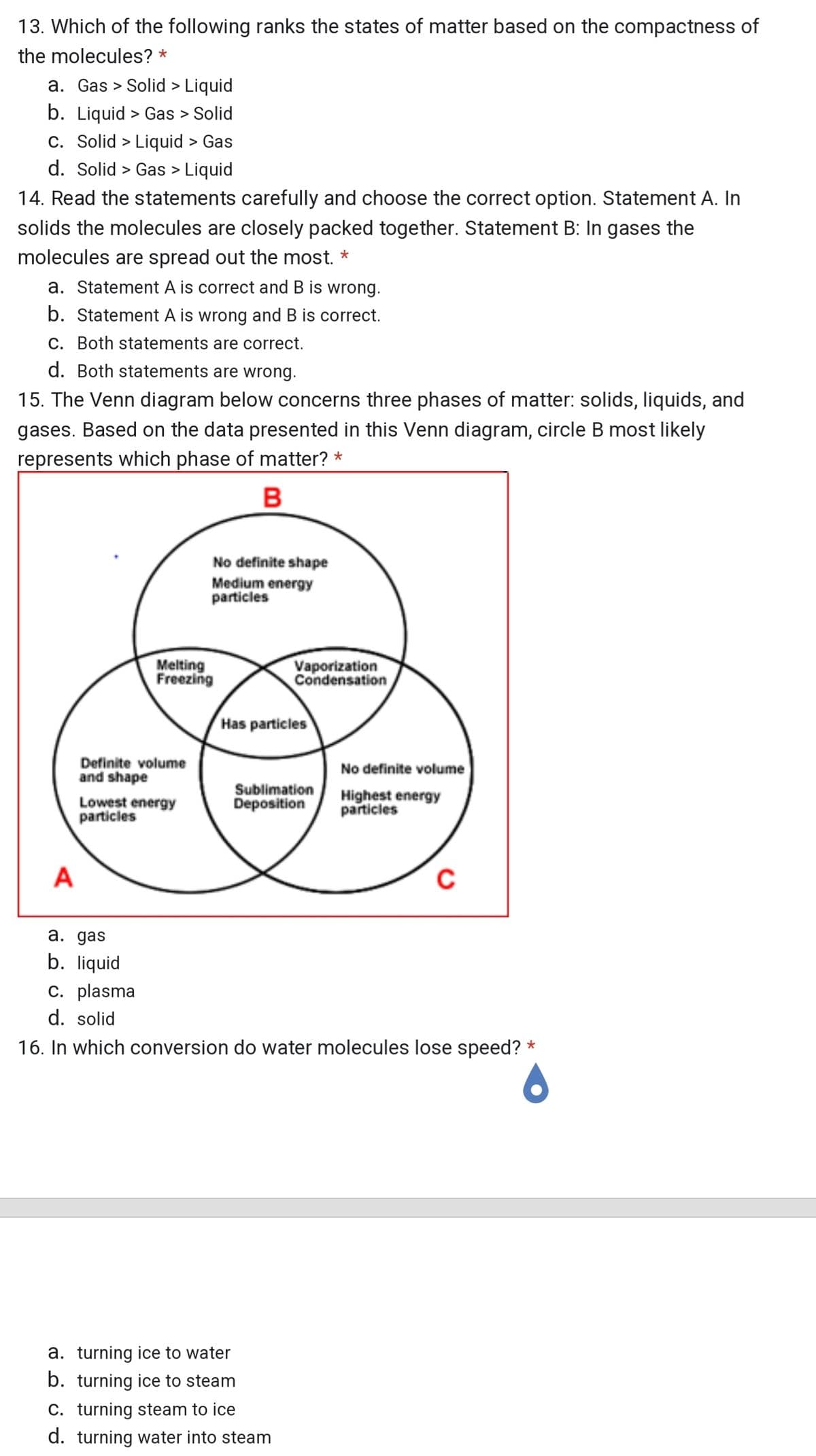13. Which of the following ranks the states of matter based on the compactness of the molecules? * a. Gas > Solid > Liquid b. Liquid > Gas > Solid C. Solid > Liquid > Gas d. Solid > Gas > Liquid 14. Read the statements carefully and choose the correct option. Statement A. In solids the molecules are closely packed together. Statement B: In gases the molecules are spread out the most. * a. Statement A is correct and B is wrong. b. Statement A is wrong and B is correct. C. Both statements are correct. d. Both statements are wrong. 15. The Venn diagram below concerns three phases of matter: solids, liquids, and gases. Based on the data presented in this Venn diagram, circle B most likely represents which phase of matter? * No definite shape Medium energy particles Melting Freezing Vaporization Condensation Has particles Definite volume and shape No definite volume Lowest energy particles Sublimation Deposition Highest energy particles A C a. gas b. liquid C. plasma d. solid 16. In which conversion do water molecules lose speed? * a. turning ice to water b. turning ice to steam C. turning steam to ice d. turning water into steam
Ideal and Real Gases
Ideal gases obey conditions of the general gas laws under all states of pressure and temperature. Ideal gases are also named perfect gases. The attributes of ideal gases are as follows,
Gas Laws
Gas laws describe the ways in which volume, temperature, pressure, and other conditions correlate when matter is in a gaseous state. The very first observations about the physical properties of gases was made by Robert Boyle in 1662. Later discoveries were made by Charles, Gay-Lussac, Avogadro, and others. Eventually, these observations were combined to produce the ideal gas law.
Gaseous State
It is well known that matter exists in different forms in our surroundings. There are five known states of matter, such as solids, gases, liquids, plasma and Bose-Einstein condensate. The last two are known newly in the recent days. Thus, the detailed forms of matter studied are solids, gases and liquids. The best example of a substance that is present in different states is water. It is solid ice, gaseous vapor or steam and liquid water depending on the temperature and pressure conditions. This is due to the difference in the intermolecular forces and distances. The occurrence of three different phases is due to the difference in the two major forces, the force which tends to tightly hold molecules i.e., forces of attraction and the disruptive forces obtained from the thermal energy of molecules.
Answer number 13 to 16 pls. I don't want to waste my money here.

Trending now
This is a popular solution!
Step by step
Solved in 2 steps









